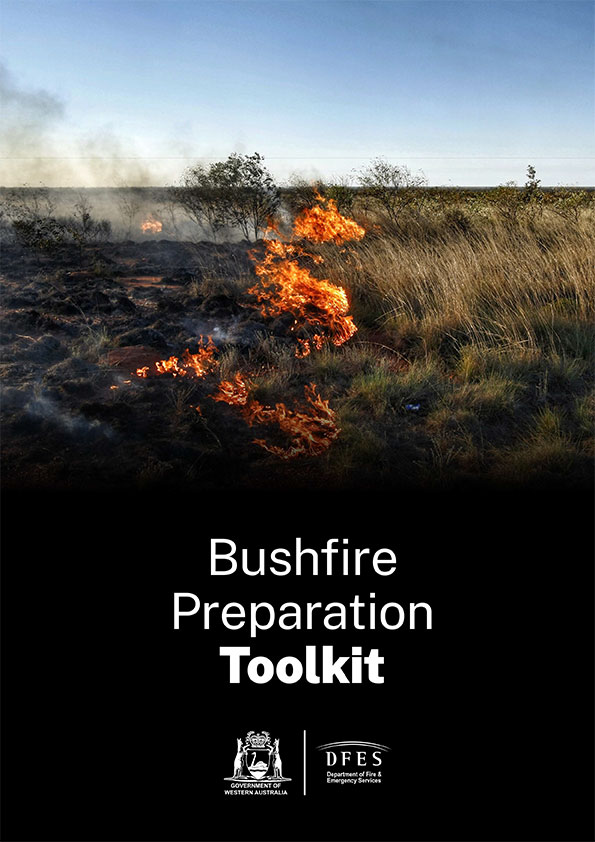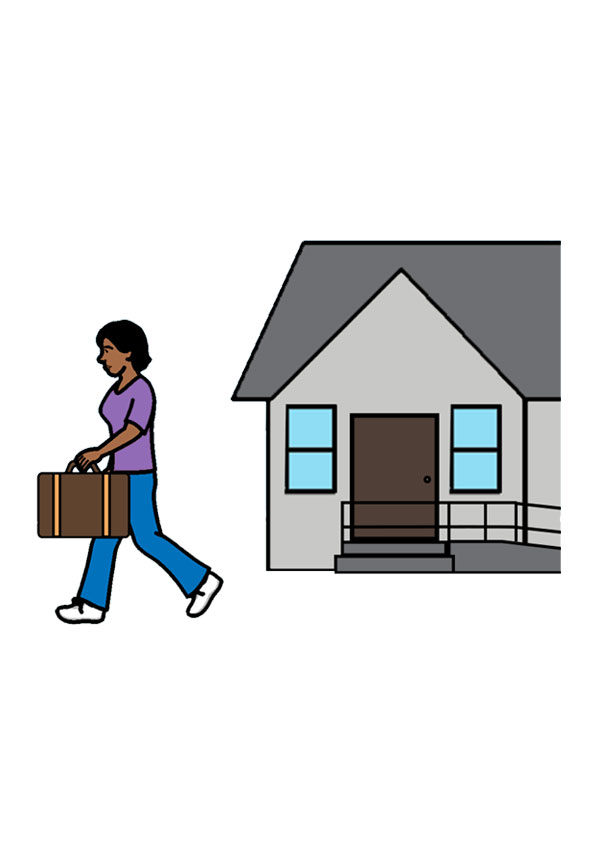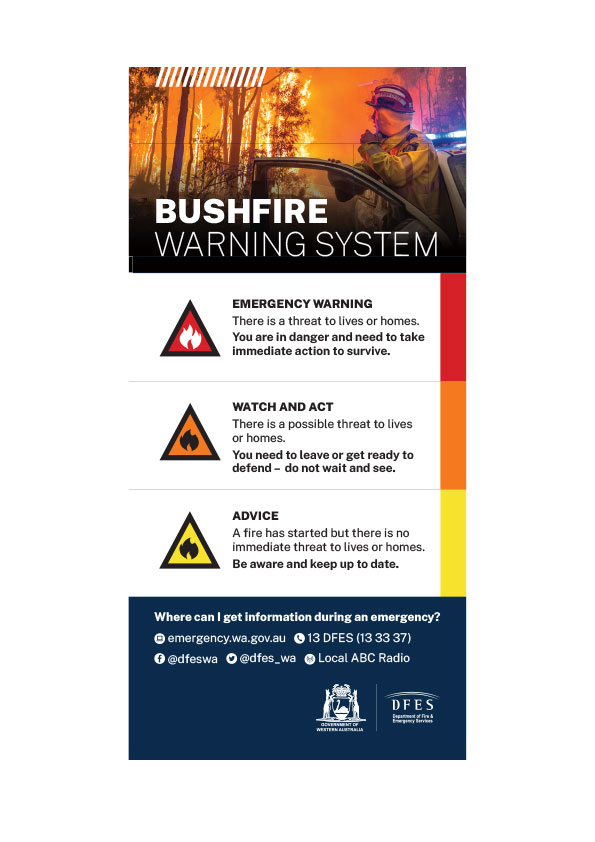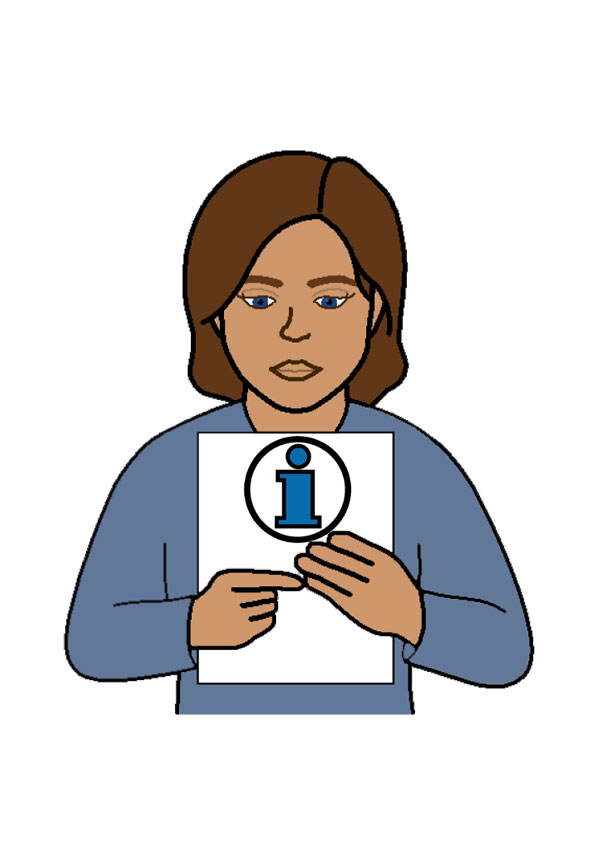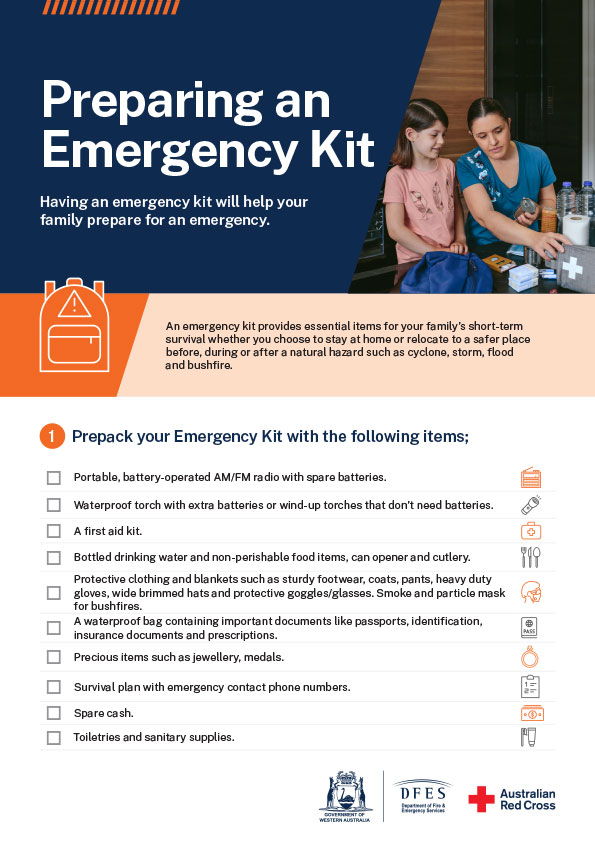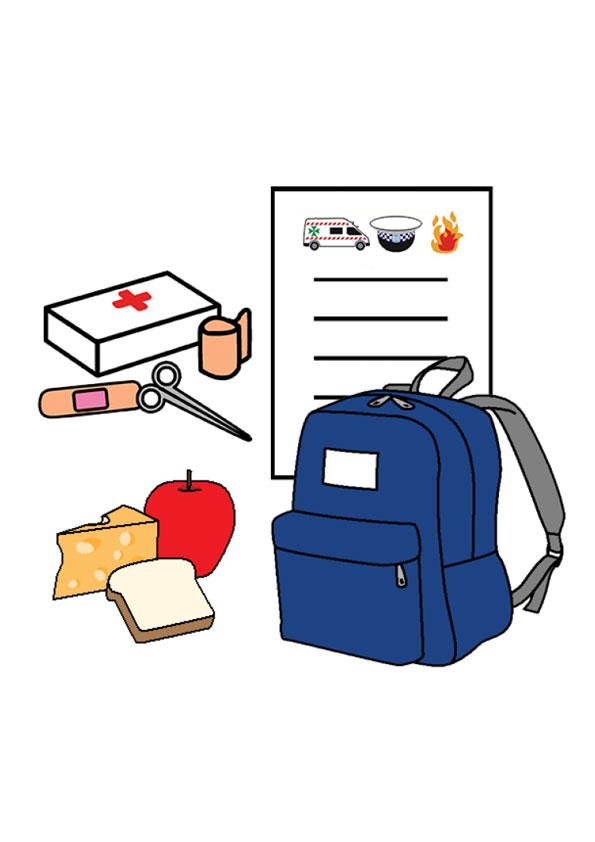Sheltering on your property during a bushfire should be your last option, when all other plans fail and if you are unable to leave. Sheltering on your property includes your home, paddock with low vegetation, a burnt out area, dam or nearby river or beach.
If you plan to stay and defend, you need a high-level understanding of bushfire behaviour, be well prepared and know your back up plans. You also need independent supplies of power and water and personnel protective equipment and clothing.
Remember that when a bushfire starts, things can change in a matter of minutes and you need to be mentally and physically prepared to survive in a variety of conditions.
Your emergency kit should be stored in a fireproof box and include items you will need to survive during and after a bushfire.
Emergency kit list:
- Supplies to last at least five days, including for pets (food, drinking water, medications, etc).
- First aid and trauma kit.
- Important/legal documents and valuables.
- Waterproof torch and battery powered lights.
- Battery operated AM/FM radio.
- Emergency contact numbers.
- Head protection and goggles.
- Smoke and particle masks.
- Non-flammable blankets.
- Bushfire protective clothing (heavy duty non-flammable coats, gloves, pants, shoes).





